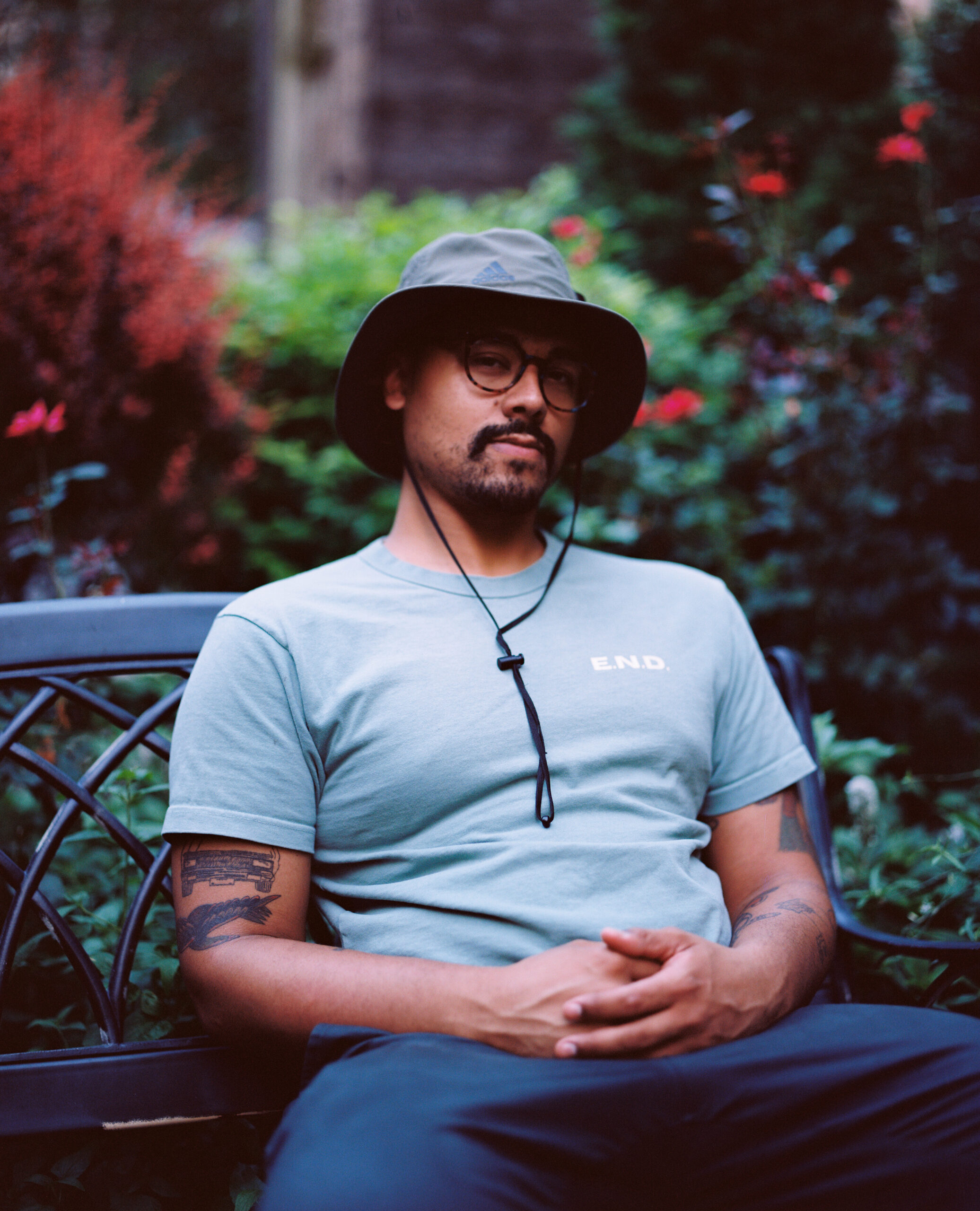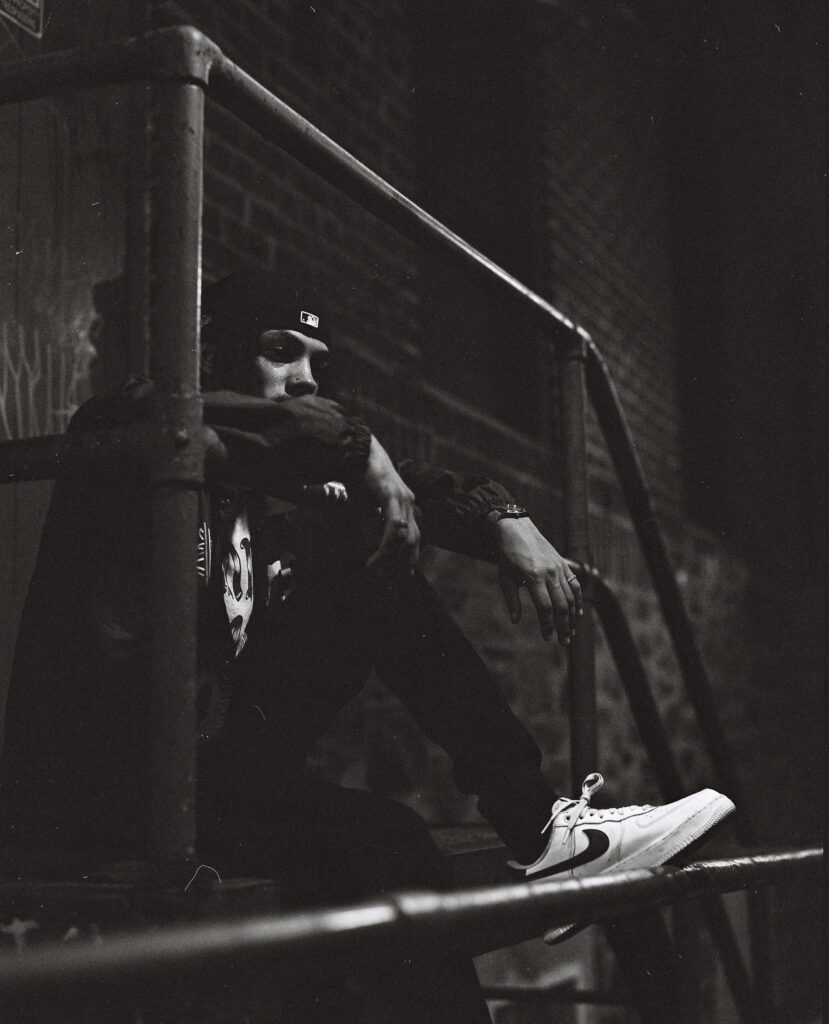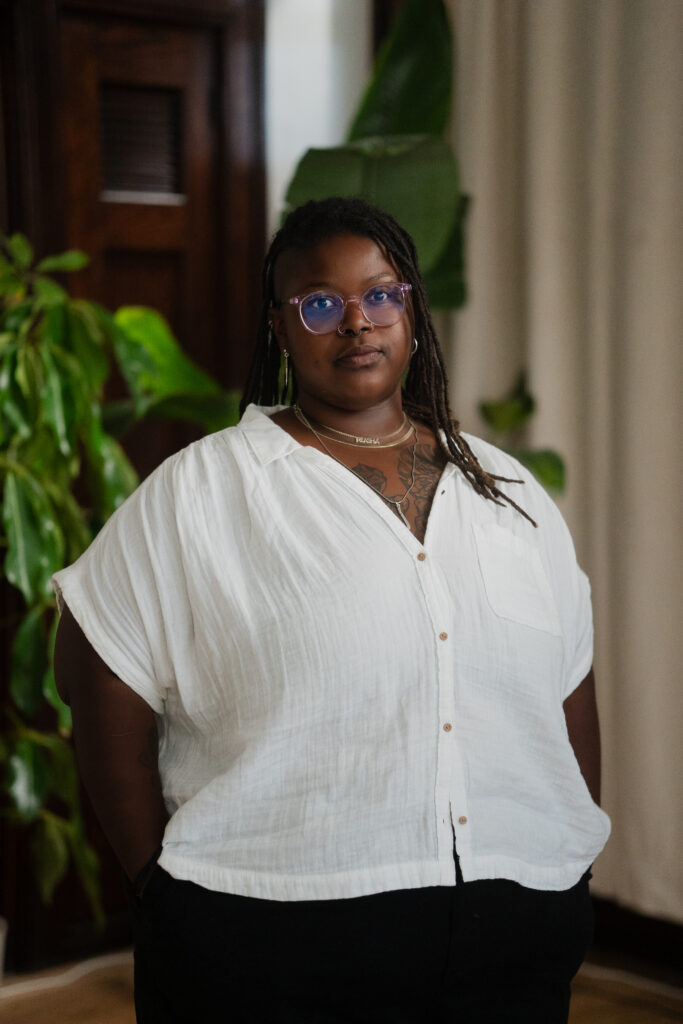
07 Nov Philadelphia Artist Spotlight: Mochi Robinson
BY IREASHIA BENNETT
The cinéSPEAK Journal publishes a monthly Philadelphia Artist Spotlight highlighting local filmmakers and moving image artists doing unique and impactful work.
The behind-the-scenes (BTS) photography of a film gives us a peek behind the veil of the filmmaking process. The fourth wall is broken and audiences are invited into the magic–the lights, the camera, the chemistry on the film set. As a photographer, Mochi Robinson’s BTS shots are artful, showing care and attention to small moments that reveal so much meaning.
Robinson originally went to school for music and moved to Scotland in 2019 to do music full time. During the COVID-19 shutdown, he picked up film photography and quickly became engrossed with capturing moments of human connection through street photography. After moving back to Philly in 2021, he decided to focus on photography full time. In 2023, he served as the BTS photographer for the BlackStar Filmmaker Lab, where he documented the production process of three films. For his first solo exhibit, Robinson is currently showcasing his photo series “Vignette” and selling prints at the Moore Vintage Archive at 725 S. 4th Street. You can learn more here.
The cinéSPEAK Journal spoke with Robinson about his inspirations, career, and the excitement of Philadelphia.
cinéSPEAK: What inspired you to become a photographer?
Mochi Robinson: Originally, I went to school as a musician. Never did I envision myself to be a visual artist in any respect. But as the pandemic persisted, I found myself without work [and with] a struggling relationship with music and a need to create. I found myself walking along the street, and passing by a camera shop. With a sense of curiosity and wonderment, I chose to buy a film camera on a whim. With this new tool in hand, I quickly became obsessed and wanted to create with it every opportunity I was given.
cinéSPEAK: You have a particularly artful way of capturing the energy of a production–you capture the magic behind the film really well. How long have you been doing that work?
MR: A lot of the first [photography] gigs or photoshoots were for my musician friends, whether it was actual portraits or concerts. My catalog, in the beginning, was music [photography] because I was also performing. [Shooting for the BlackStar Filmmaker Lab productions] was my first time being behind the scenes on a film set. Meeting those kinds of creatives before allowed me to slip into that role. Just noticing, “Oh, they are doing something very specific that looks pretty integral to what’s going on here. So maybe let’s try to capture that.” That was a beautiful experience and opportunity.

cinéSPEAK: What topics and themes are you exploring in your current work?
MR: I find that my work is usually rooted in people. Mostly how they interact with each other and the world around them. Doing a lot of event photography, I have had to learn and read people with anticipation of their actions, too. Which has only deepened my curiosity for capturing people even more. I also would love to think that I romanticize the mundane. I find immeasurable beauty and inspiration in the everyday actions we have. From an outdoor lunch break soaking up the sun, the gaze of someone in love, or even a child sitting upon their parent’s shoulders, there is extreme beauty in the actions we have every day.
cinéSPEAK: How has Philadelphia influenced your work?
MR: The city is incredibly eclectic. When you go to so many different pockets of the city and [become] immersed with different surroundings, it lends to inspiring you in more than one way. It’s interesting to see the people [who] live in Chinatown, their day-to-day life, how bustling their markets are, and the liveliness of their exchanges. It’s really beautiful and it’s such a great spirit to be around.
The subway rides that I had to take, coming from South Philly up to Fishtown, contributed to such low mental health. You see the dichotomy of the city. I would notice how many people are sleeping on the benches. But I’m also sitting next to nurses because we have a thriving medical university and hospital complex. There’s just so much to take away. Now with all of that, you get into the people groups–the art groups, because we have a lot of separation as well. It’s just so many of these microcosms that exist in the city.
cinéSPEAK: What impact do you hope your work will have in the Philadelphia community?
MR: I hope to simply illuminate the light and beauty that exists inside this city. There are countless incredible moments happening at all times that seldom are recognized, nor documented. I also hope to help foster a stronger community throughout the various scenes in this city.
If you would like to keep up with Mochi Robinson’s work, you can check out his website or follow him on Instagram @mochionfilm.
*Featured Image: Image of Mochi Robinson. Image Credit: Joseph Porter.
Would you like to be featured in a future spotlight? Please fill out the Philadelphia Artist Spotlight form. The cinéSPEAK Journal maintains sole discretion over the publishing of any information provided via the form. Questions: journal@cinespeak.org

Ireashia M. Bennett (they/them) is a Philadelphia-based filmmaker, photographer, and writer whose work aims to celebrate Black queer and disabled folks in the form of new media, short films, and photoessays. They earned a B.A. in Journalism from Columbia College Chicago and are pursuing an MFA in Film and Media Arts at Temple University.

Sorry, the comment form is closed at this time.